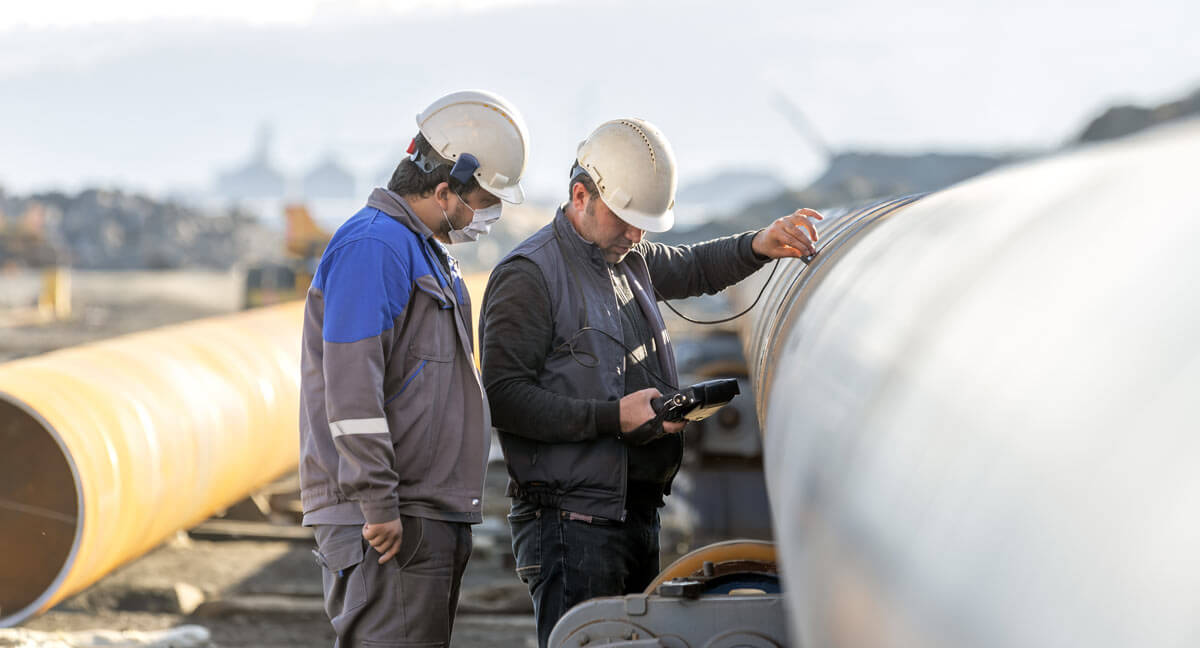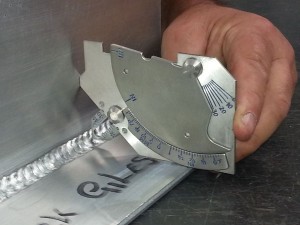A Comprehensive Guide to Welding Evaluation: Comprehending Criteria, Techniques, and Ideal Practices for Quality Control
Welding evaluation plays an essential role in making certain the architectural stability and safety and security of welded components, requiring a thorough understanding of industry requirements such as those developed by AWS and ASME. As we check out these essential elements, it ends up being obvious that the implications of welding inspection expand much beyond compliance, welcoming a more detailed evaluation of exactly how these procedures form sector criteria and methods.
Importance of Welding Evaluation
Welding inspection plays an important role in guaranteeing the honesty and security of welded frameworks. It is a vital procedure that validates that welds satisfy predefined specifications, which is essential in different sectors, consisting of building, automobile, and aerospace. By performing extensive inspections, possible flaws such as splits, insufficient fusion, and porosity can be determined early, preventing disastrous failures that could result in crashes or expensive fixings.
The importance of welding inspection expands past simple conformity with regulations; it additionally cultivates depend on with stakeholders. Clients and regulative bodies expect guarantee that the structures they rely upon are constructed to withstand operational stress and anxieties. Additionally, reliable welding evaluation techniques add to long-term longevity and efficiency of the structures, eventually resulting in reduced maintenance costs.
Additionally, welding assessment promotes a society of high quality within organizations, motivating adherence to finest methods and constant renovation. By integrating inspection procedures right into the welding workflow, companies can improve their track record and develop themselves as leaders in top quality guarantee. To conclude, the value of welding evaluation hinges on its capability to safeguard lives, ensure architectural integrity, and copyright market requirements, making it a crucial aspect of welding operations.
Trick Market Requirements
Guaranteeing compliance with vital market standards is vital for keeping the top quality and safety and security of bonded frameworks. Various companies establish these requirements to advertise finest methods in welding and inspection - Welding Inspection Gilbert Arizona. Among the most recognized are the American Welding Culture (AWS) and the American Culture of Mechanical Designers (ASME), which supply thorough standards and requirements for welding procedures and evaluation standards
AWS requirements, such as AWS D1.1 for architectural welding, synopsis requirements for products, design, and testing to guarantee the honesty of welds. Likewise, ASME codes, consisting of ASME Section IX, control the credentials of welders and welding procedures, guaranteeing consistent top quality in industrial applications. Internationally, the ISO 3834 conventional emphasizes top quality needs for combination welding, giving a framework for companies to demonstrate conformity with international best techniques.
Compliance with these criteria not only enhances the reliability of bonded frameworks however additionally alleviates threats related to architectural failures. In addition, adherence to industry criteria is typically a prerequisite for governing authorizations and can substantially influence job requirements. Eventually, understanding and implementing these key standards are vital for reliable welding inspection and quality control.
Evaluation Techniques Introduction
Reliable welding assessment depends on a range of methods made to analyze the top quality and stability of welds. These strategies can be broadly classified right into non-destructive and destructive testing (NDT) approaches. Non-destructive testing strategies, which are widely favored in the market, permit the evaluation of welds without endangering the honesty of the material.

Among the most frequently utilized NDT methods are visual evaluation, why not check here ultrasonic testing, radiographic screening, and magnetic particle screening. Visual inspection is commonly the initial step in the assessment procedure, allowing examiners to identify surface blemishes and examine weld bead profiles.
Each method has its very own benefits and limitations, making it essential for assessors to choose the useful site most ideal approach based upon the particular needs of the job, the materials involved, and the urgency of the welds being examined. This mindful option maintains and makes certain extensive assessments safety and security and quality criteria in welding operations.
Typical Problems and Their Effects
A thorough understanding of usual flaws in welds is vital for keeping structural honesty and safety and security in bonded constructions. Welding defects can considerably jeopardize the mechanical residential or commercial properties of the joint, causing failures that could threaten both workers and devices.
Usual defects consist of porosity, which materializes as small gas pockets trapped in the weld metal, deteriorating the overall structure. Cracking is another widespread issue, often arising from rapid air conditioning or inappropriate joint design, resulting in stress and anxiety concentrations that can lead to tragic failures. Insufficient combination takes place when the weld steel stops working to correctly bond with the base product, developing powerlessness that may bring about splitting up under lots.
Various other remarkable issues include undercutting, where the weld bead erodes the base steel, and slag incorporations, which can hinder the weld's stamina. Each of these flaws has details ramifications; for example, porosity can lower ductility, while splitting straight impacts tensile toughness. Recognizing and comprehending these flaws throughout inspection is important for executing rehabilitative procedures and guaranteeing conformity with sector criteria, inevitably securing the structural stability of welded settings up.
Finest Practices for Quality Control
Applying best practices for high quality guarantee in welding procedures is necessary for attaining optimum results and decreasing flaws. One vital method is the establishment of clear welding procedures that adhere to industry standards and requirements. These treatments need to consist of in-depth directions relating to material option, joint preparation, and welding strategies to guarantee consistency and top quality.
Regular training and certification of welding workers are additionally important. Proficient welders that recognize the significance of top quality assurance are most likely to create sound welds. In addition, carrying out a robust examination program, including both aesthetic and non-destructive best site testing (NDT), can aid identify defects early at the same time, enabling for timely restorative activities.

Lastly, fostering a culture of quality within the organization motivates employees to focus on quality in their work. By sticking to these ideal practices, organizations can boost the integrity of their welding procedures, inevitably leading to enhanced product quality and minimized expenses connected with rework and fixings.

Conclusion
In conclusion, welding examination plays a crucial role in ensuring the stability and safety and security of welded structures. By carrying out ideal practices, organizations can boost integrity, decrease maintenance expenses, and cultivate trust amongst customers, ultimately contributing to successful welding operations.
Additionally, welding evaluation promotes a culture of high quality within organizations, motivating adherence to best practices and continuous improvement. In verdict, the importance of welding inspection exists in its ability to guard lives, make certain structural dependability, and support industry standards, making it an essential element of welding operations.
Amongst the most acknowledged are the American Welding Society (AWS) and the American Culture of Mechanical Engineers (ASME), which provide comprehensive standards and specs for welding processes and evaluation requirements.
Ultimately, understanding and implementing these vital requirements are important for efficient welding evaluation and quality guarantee.
Reliable welding inspection counts on a variety of strategies developed to examine the quality and integrity of welds.